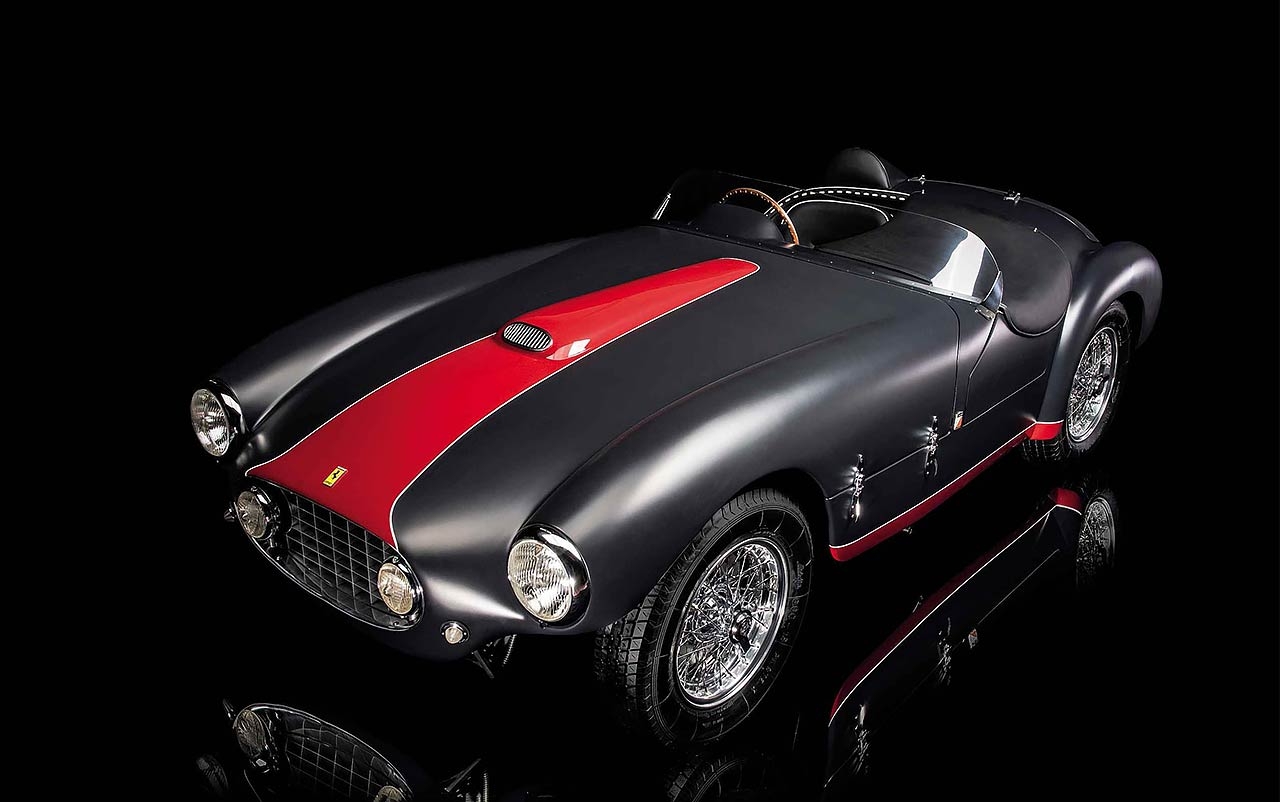
Ferrari 166MM barchetta. All 166MMs are special, but this one is more special than most The odds that an unknown coachbuilder could better Touring’s classic 166 Barchetta were long – but long odds are there to be beaten. Dark horse The first good-looking Ferrari? Words Peter Tomalin. Photography Dan Savinelli Archive images Marcel Massini.
Poring over this spectacular 166MM barchetta in all its freshly restored glory, it takes quite a leap of imagination to picture it hammering along the crumbling roads of post-war Europe, sides caked in oil and dust, bodywork beaten back into shape after its inevitable off-road excursions. This, though, was early Ferrari, a young company forging its reputation in the crucible of motor sport, competing in the great road races of the day, from the dirt and heat of the Tuscan plains to treacherous Alpine passes. This was Ferrari before the marketing men got involved, before all the baggage arrived.

The 166MM played a crucial role in putting Enzo Ferrari’s Áedgling company on the world map, and this particular 166MM was right in the thick of it, as we shall see. It was also, at different stages of its colourful life, a race and rally car, a motor show star and a fastback coupé. Now, after undergoing a properly painstaking restoration, it is soon to go to auction with an estimate ‘in the region of €3,000,000’. Given its history and its one-off nature, it might just exceed those expectations. If all 166MMs are special, this one is more special than most.
To understand the significance of the Type 166 series, you have to look at its forebears. But preferably not for too long. Ugly little blighters, those early Ferraris. Oh, they were effective – the Type 125 of 1947 won races virtually from the off, thanks to Gioacchino Colombo’s wonderful little V12 engine – but it’s unlikely anyone ever pinned a photo of a 125 to their bedroom wall. Bulbous snouts, bathtub bodywork, rudimentary cycle wings – form was dictated strictly by function, panels hammered into simple shapes by artisans rather than drawn by artists. It wasn’t long, though, before that all began to change.
The new 166 series (named after the capacity of one cylinder, giving a total of 1992cc) appeared in early 1948. The very earliest examples were every bit as brutally functional and unlovely as the 125s they replaced, though they were also the first Ferraris that were actually sold to paying customers. The real turning point came in September 1948, when Ferrari attended its first motor show.
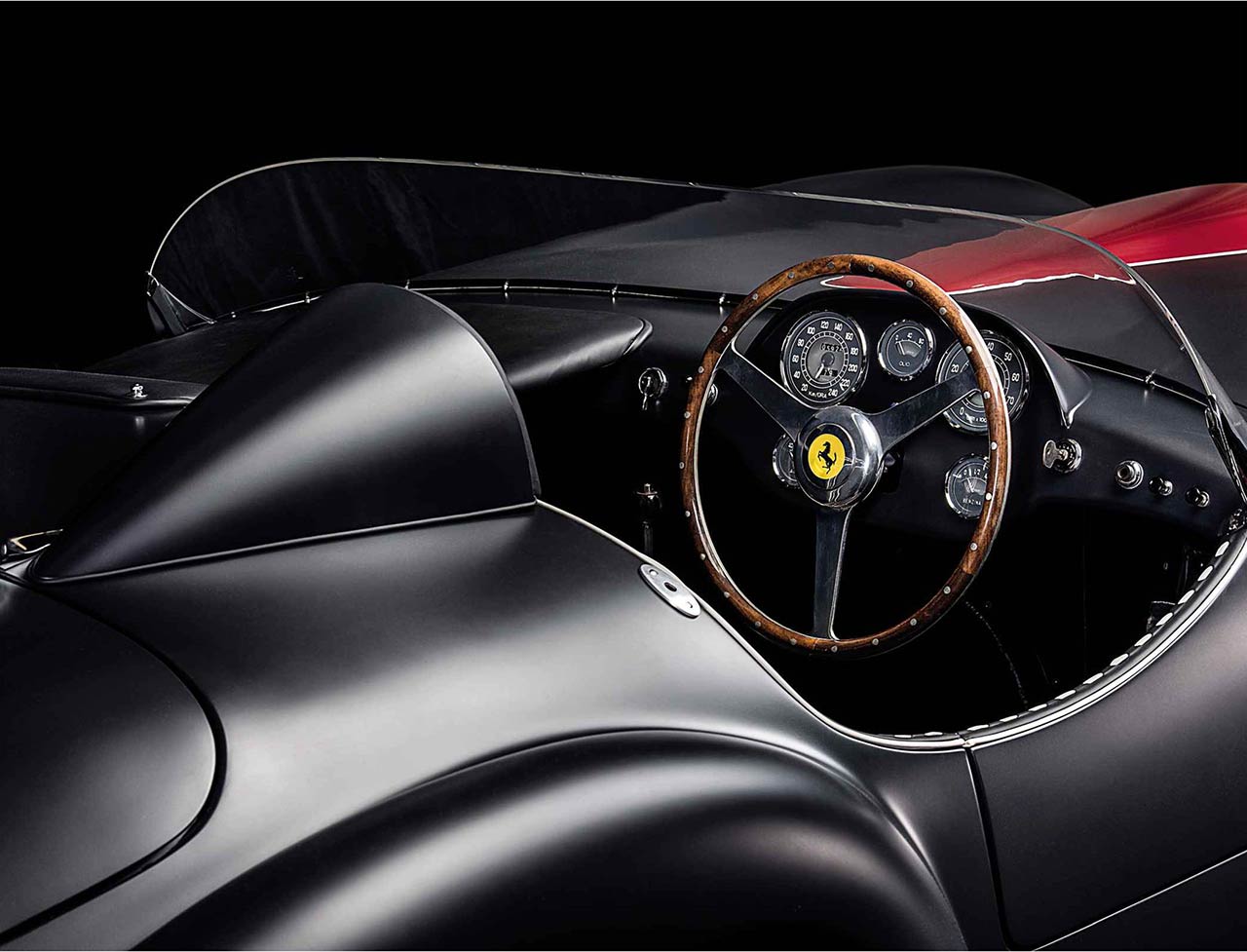
The star of its stand at the 1948 Turin Salon was the 166MM, the suffix chosen to celebrate Clemente Biondetti and Giuseppe Navone’s victory in May’s Mille Miglia road race with a 166 Sport. Under the 166MM’s bonnet was a 1995cc version of Colombo’s now well-proven 60-degree, single-overhead-cam V12, fed by three twin-choke Weber carburettors and good for a claimed 140bhp at 6600rpm.
The real news, though, was the MM’s beautifully proportioned barchetta (literally ‘little boat’) bodywork by Carlo Anderloni at Touring of Milan. Its taut curves were greatly admired and soon widely imitated – not least by AC with its Ace. Now Ferrari had a shape, an image, in keeping with the performance of its cars.
The 166MM was no playboy’s plaything; this was a serious sports-racing car and would score many of the Scuderia’s first international victories, including an outright win at Le Mans in 1949. MMs were built in small numbers, mostly by Touring and Vignale. In those days Ferrari provided the chassis and engine; it was up to the customer or supplying dealer to decide which coachbuilder would clothe them. In all, and across two series between 1949 and 1953, fewer than 50 examples were built, no two cars exactly alike. Most, like the original show car, were barchettas, but there was also a handful of coupés, or berlinettas as the Italians called them. One such was chassis 0300 M.
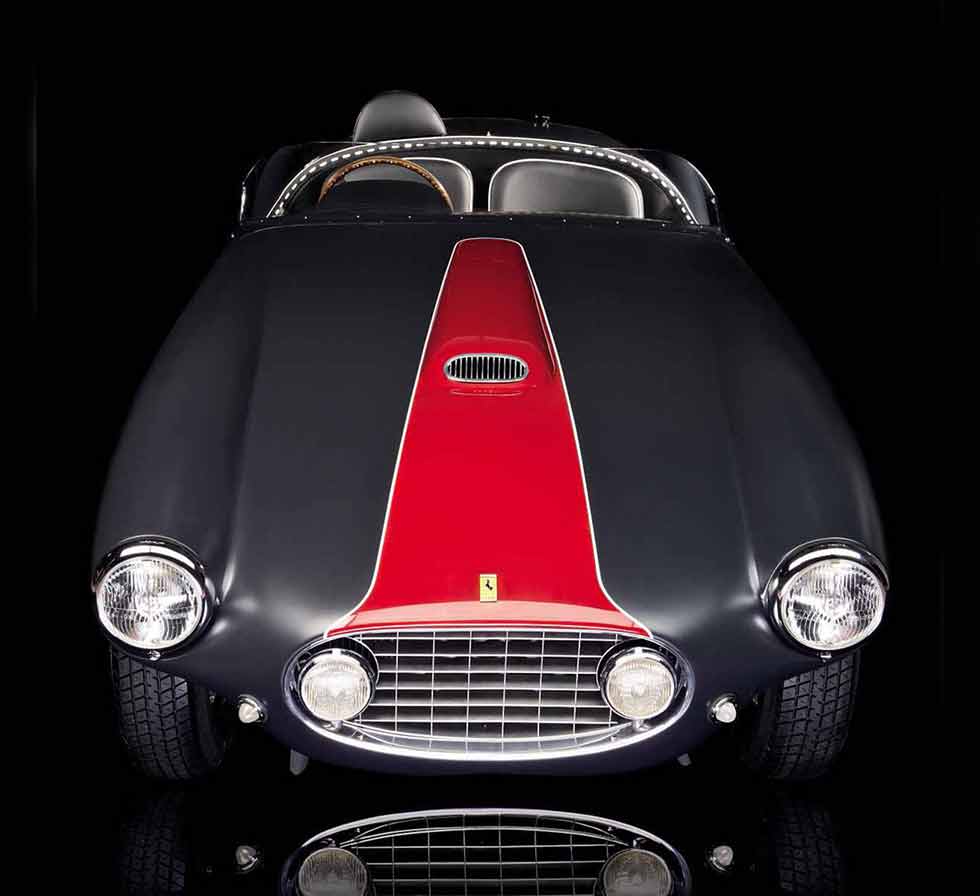
It was on 1 April 1953 that the Ferrari works dispatched chassis 0300 M, complete with 2.0-litre racing engine, to Vignale of Turin to have its coupé bodywork fitted. Upon completion it was delivered to Jacques Swaters’ Garage Francorchamps in Brussels, and from there to its first owner, local businessman and keen amateur racer Jacques Herzet.
Herzet’s enthusiasm was very soon evident. Within days, he had entered his new Ferrari in its first event, the Coupes de Spa, on 17 May 1953. It was barely six weeks since the chassis had been delivered to Vignale. Perhaps most remarkably of all, given that there could have been precious little time for testing, it finished second overall.
‘The $400,000 restoration saw the team undo myriad alterations that had been wrought over the years’
Enrolling the services of his well-known countrymen Lucien Bianchi and Johnny Claes as co-drivers for longer events, Herzet was soon competing in Germany, France, Italy and Portugal. On the Rallye des Alpes, 0300 M finished a mightily impressive third overall and first in class.
Perhaps its most notable performance, though, was on the gruelling Liège-Rome-Liège rally. Photographs show the berlinetta powering around a mountain hairpin in low cloud, the foglamps, set into the egg-crate grille, blazing through the murk, the chassis leaning hard on its Englebert crossplies. In a repeat of its showing in the Alpine rally, it placed third overall and first in class.
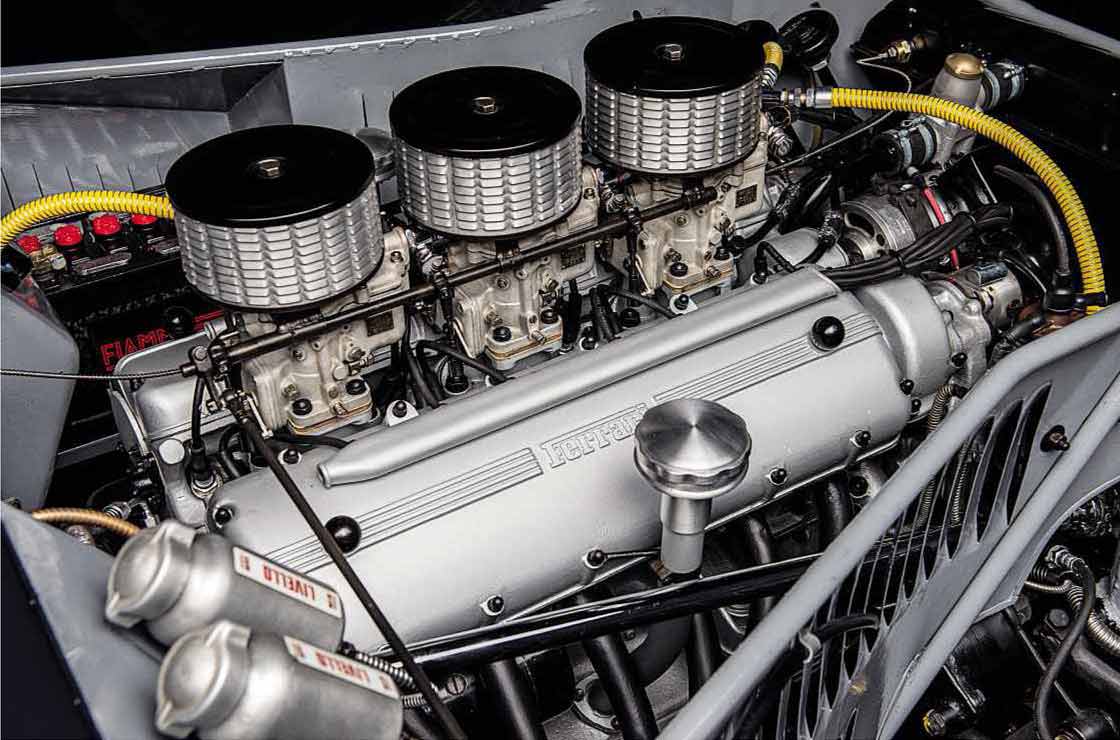
At the end of the year 0300 M was shipped out to South America, where it took part in four further races on the street circuits of Brazil, its best result being a fifth in the Grand Prix of Rio de Janeiro.
All this as a berlinetta, remember. In February 1954 Herzet had the battle-scarred 166 returned to Belgium and delivered to Brussels-based designer and coachbuilder Martial Oblin, who was instructed to remove the coupé bodywork and rebody 0300 M as a barchetta – both in the interest of lightness and also because Herzet wanted something genuinely unique.
Little known and hardly proli c (apart from this Ferrari, Oblin appears to have bodied only two other cars, a Jaguar XK120 and a Talbot-Lago T26 coupé), Herzet’s compatriot nevertheless did him proud. Oblin’s bodywork had clear echoes of the Touring barchetta, but with a powerful stance all of its own. What made it even more singular was its striking matt-charcoal paintwork with central stripe in vivid red, set off with polished, 16-inch wheels and eye-catching cockpit trim inspired by haute couture fashion of the day.
In its new finery – and usefully lighter as a spider – 0300 M returned to competition in the summer of 1954, finishing sixth in class in the 12 Hours of Reims and appearingin the Liège-Rome-Liège and the Tour de France, though Herzet was unable to replicate the triumphs of the previous year.
As if a racing career wasn’t enough for this Ferrari, shortly after the start of the 1955 season, and in between races, its bodywork and interior were given a hasty tidy-up in preparation for its next role – as the star of the Martial Oblin stand at the prestigious Brussels Motor Show in April 1955. It was no doubt a proud moment for both Herzet and Martial Oblin.
Herzet continued to campaign 0300 M throughout 1955 and ’1956, frequently finishing among the class front-runners and taking first in class in the 1955 SAR Cup race in Campione d’Italia. The car’s last competitive event was the Côte de Bomerée hillclimb on 10 May 1957, at which it finished fifth in class.
Little is known about Herzet’s subsequent racing activities, but we do know that later in 1957 he sold the car to a fellow Brussels resident, Jan de Dobbeleer, and that the car remained in Belgium until 1966, when it was imported into the USA by Volkswagen dealer Ed Bond. After passing through the hands of several other American owners, in 1977 it was bought for $15,000 by Dr Robert ‘Bob’ Selz, a dentist based in Hallandale, Florida. And in Bob Selz’s sympathetic custody it would remain for the next 35 years.
‘Oblin’s bodywork had clear echoes of the Touring barchetta, but a powerful stance all of it s own’
An active member of the Ferrari Club of America, Selz continued to use the car regularly. In 2005, he had it shipped back to Italy where he drove it in the Mille Miglia retrospective, and he repeated the experience in 2009.
For a car with such a competition history – 25 major events in the first four years of its life – 0300 M has survived with its structure and mechanical components remarkably intact. During its racing career it was subject to numerous small modifications, as racing cars are, and it underwent a restoration in the late 1970s and again in the early ’90s, at one point being repainted in a more typically Ferrari Rosso Corsa. But it always kept its engine, chassis, drivetrain and its unique Oblin bodywork. To this day, it even retains its original tool roll and quick-jack.
In 2012 Bob Selz finally parted company with 0300 M and it was acquired by Dennis Nicotra, the Connecticut-based founder of the Premier Classic Car Collection. It was Nicotra who commissioned its recent restoration, which was led by Kent Bain and Charlie Webb at Automotive Restoration Inc. After careful consideration, it was decided to take the car back to the exact configuration in which it had appeared at the 1955 Brussels motor show, a moment in time that captured all that is great and unique about this special car. The $400,000 restoration saw the team undo myriad alterations that had been wrought over the years, and the finished car re-emerged in public at the Cavallino Classic in Palm Beach in January 2013.
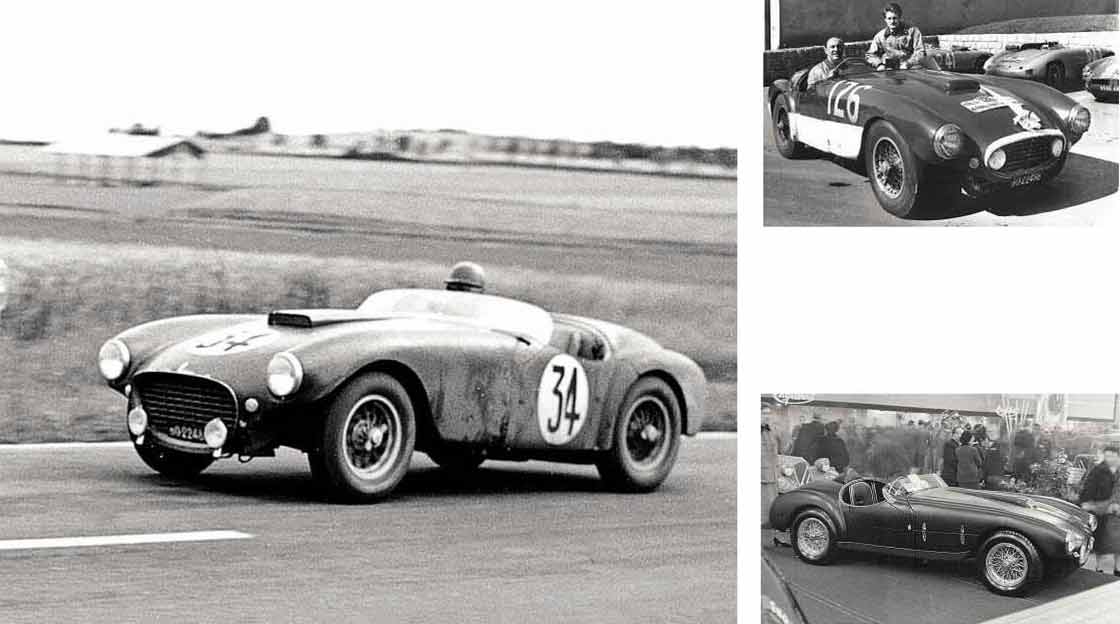
Now it’s going to auction, at Artcurial’s Rétromobile sale on 7 February. The house’s experts are clearly besotted with it. ‘Not everyone likes restored cars,’ says consultant Pierre Novikoff, ‘but this is different. It has been so expertly done. Really clever. And exactly as it was for the 1955 show. It is very rare to have a car that looks as stunning as this but that also has such a fantastic history.’
Artcurial director Matthieu Lamoure is one of the privileged few to have driven the Oblin 166MM. ‘I was lucky to drive it through the streets of London for the St James’s Concours in 2013. That was quite a thrill!
‘It really is a great car to drive. It starts Immediately and runs beautifully. Mechanically it feels almost like a new car. The controls are light and smooth. I have driven later, larger-engined Ferraris, including the 212 barchetta with the 2.6-litre engine, but I have to say the 166 feels very powerful, very responsive. I was surprised by the performance. And when you’re behind the wheel you just want to drive and drive.’
‘Photographs show the car powering around a mountain hairpin in low cloud, the foglamps blazing through the murk’
Venerated Ferrari historian Marcel Massini, who pieced together much of the history of the car, describes the Oblin barchetta as ‘a little gem’. ‘Martial Oblin and Jacques Herzet were clearly proud of this great car,’ he says. ‘Today, 0300 M gives us all the opportunity to see a great piece of Ferrari’s race and design history.’ Massini adds: ‘Its restoration was performed with continued competitive use in mind, not concours events. Although its stunning appearance might have you believe differently, I suspect we will see this car on the track and on the road for many years to come, being driven hard, just as it was in those early years of its illustrious life.’
Let’s hope Massini’s right. Anything less just wouldn’t do justice to this unique Ferrari – or to the enterprising Belgian who wrote the early chapters in its remarkable story.
The Ferrari 166mm barchetta by Oblin will be auctioned by Artcurial Motorcars at Rétromobile in Paris on 7 February, along with lots including the 1953 Ferrari-engined Abbate Motoscafo hydroplane – said to be the only boat to be fitted with a 1950s Ferrari F1 motor. More at www.artcurial.com.
TECHNICAL DATA FILE SPECIFICATIONS 1953 Ferrari 166MM barchetta
ENGINE 1995cc 60° V12, SOHC per bank, three Weber 36DCF twin-choke carburettors
POWER 130bhp @ 7000rpm / DIN
TORQUE 117lb @ 5000rpm / DIN
TRANSMISSION Five-speed, rear-wheel drive
STEERING Worm and sector
SUSPENSION Front: independent, double wishbones, transverse leaf springs, hydraulic dampers. Rear: live axle, leaf springs, hydraulic dampers, anti-roll bar
BRAKES Drums
WEIGHT 699kg
PERFORMANCE Top speed 125mph. 0-60mph 10sec






